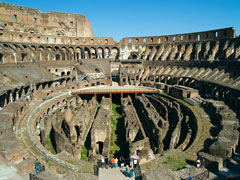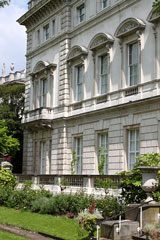European "Christendom" saw a high level of persecution of witches -- those supposedly practicing maleficarum or harmful magic -- which peaked especially from the mid 15th century (1400s) to the mid 18th century (1700s).
The number executed on charges of witchcraft is not certain and subject to considerable controversy. Estimates have ranged from about 10,000 to nine million. Most historians accept a figure in the range from 40,000 to 100,000 based on public records; there were perhaps two to three times that many individuals accused formally of or tried for witchcraft. About 12,000 executions have been identified in existing records.
About three fourths of the executions based on witchcraft accusations were in the Holy Roman Empire, including parts of what are today Germany, France, the Netherlands and Switzerland. The peaks of accusations and executions came at somewhat different times in different regions.
The most executions in Europer, by number, for witchcraft were in the period from 1580 to 1650.
Timeline
| Year(s) | Event |
| B.C.E. | The Hebrew Scriptures addressed witchcraft, including Exodus 22:18 and various verses in Leviticus and Deuteronomy. |
| about 200 - 500 C.E. | The Talmud described forms of punishments and execution for witchcraft |
| about 910 | The Canon Episcopi was recorded by Regino of Prümm describing folk beliefs in Francia, just before the beginning of the Holy Roman Empire. This text influenced later canon law. It condemned maleficium (bad-doing) and sorilegium (fortune-telling), but argued that most stories of these were fantasy, and also argued that those who believed they magically flew were suffering from delusions. |
| about 1140 | Mater Gratian's compilation of canon law, including the Canon Episcopi (see "about 910" above), also included writings from Hrabanus Maurus and excerpts from Augustine. |
| 1154 | John of Salisbury wrote of his skepticism about the reality of witches riding in the night. |
| 1230s | An Inquisition against heresy was established by the Roman Catholic Church. |
| 1258 | Pope Alexander IV accepted that sorcery and communication with demons was a kind of heresy. This opened the possibility of the Inquisition, concerned with heresy, being involved with witchcraft investigations. |
| late 13th century | In his Summa Theologiae, and in other writings, Thomas Aquinas briefly addressed sorcery and magic. He assumed that consulting demons included making a pact with them, which was by definition, apostasy. He accepted that demons could assume the shapes of actual people; the demons' acts are thus mistaken for those actual people's. |
| 1306 - 15 | The Church moved to eliminate the Knights Templar. Among the charges were heresy, witchcraft and devil-worship. |
| 1316 - 1334 | Pope John XII issued several bulls identifying sorcery with heresy and pacts with the devil. |
| 1317 | In France, a bishop was executed for using witchcraft in an attempt to kill Pope John XXII. This was one of several assassination plots around that time against the pope or a king. |
| 1340s | Black Death swept through Europe, adding to the willingness of people to see conspiracies against Christendom. |
| about 1450 | Errores Gazaziorum, a papal bull, identified witchcraft and heresy with the Cathars. |
| 1484 | Pope Innocent VIII issued Summis desiderantes affectibus, authorizing two German monks to investigate accusations of witchcraft as heresy, threatening those who interfered with their work. |
| 1486 | The Malleus Maleficarum was published. |
| 1500-1560 | Many historians point to this period as one in which witchcraft trials -- and Protestantism -- were rising |
| 1532 | Constitutio Criminalis Carolina, by Emperor Charles V, and affecting the whole Holy Roman Empire, declared that harmful witchcraft should be punished by death by fire; witchcraft that resulted in no harm was to be "punished otherwise." |
| 1542 | English law made witchcraft a secular crime with the Witchcraft Act. |
| 1552 | Ivan IV of Russia issued the Decree of 1552, declaring witch trials were to be civil matters rather than church matters. |
| 1560s and 1570s | A wave of witch hunts were launched in southern Germany. |
| 1563 | Publication of De Praestiglis Daemonum
by Johann Weyer, a physician to the Duke of Cleves. It argued that much
of what was thought to be witchcraft was not supernatural at all, but
just natural trickery. The second English Witchcraft Act was passed. |
| 1580 - 1650 | Many historians consider this the period with the largest number of witchcraft cases, with the period of 1610 - 1630 being a peak within this period. |
| 1580s | One of the periods of frequent witchcraft trials in England. |
| 1584 | Discoverie of Witchcraft was published by Reginald Scot of Kent, expressing skepticism of witchcraft claims. |
| 1604 | Act of James I expanded punishable offenses related to witchcraft. |
| 1612 | The Pendle witch trials in Lancashire, England, accused twelve witches. The charges included the murder of ten by witchcraft. Ten were found guilty and executed, one died in prison and one was found not guilty. |
| 1618 | A handbook for English judges on pursuing witches was published. |
| 1634 | Loudun witch trials in France. Ursuline nuns reported being possessed, victims of Father Urbain Grandier, who was convicted of sorcery. He was convicted despite refusing to confess even under torture. After Father Grandier was executed, the possessions continued until 1637. |
| 1640s | One of the periods of frequent witchcraft trials in England. |
| 1660 | Another wave of witch trials in northern Germany. |
| 1682 | King Louis XIV of France prohibited further witchcraft trials in that country. |
| 1682 | Mary Trembles and Susannah Edward were hanged, the last documented witch hangings in England itself. |
| 1692 | Salem witch trials in the British colony of Massachusetts. |
| 1717 | The last English trial for witchcraft was held; the defendant was acquitted. |
| 1736 | The English Witchcraft Act was repealed, formally ending witch hunts and trials. |
| 1755 | Austria ended witchcraft trials. |
| 1768 | Hungary ended witchcraft trials. |
| 1829 | Histoire de l'Inquisition en Franceby Etienne Leon de Lamothe-Langon was published, a forgery claiming massive witchcraft executions in the 14th century. The evidence was, essentially, fiction. |
| 1833 | A Tennessee man was prosecuted for witchcraft. |
| 1862 | French writer Jules Michelet advocated a return to goddess worship, and saw women's "natural" inclination to witchcraft as positive. He depicted witch hunts as Catholic persecutions. |
| 1893 | Matilda Joslyn Gage published Women, Church and State which included the figure of nine million executed as witches. |
| 1921 | Margaret Murray's The Witch Cult in Western Europe was published, her account of the witch trials. She argued that witches represented a pre-Christian "old religion." Among her arguments: the Plantagenet kings were protectors of the witches, and Joan of Arc was a pagan priestess. |
| 1954 | Gerald Gardner published Witchcraft Today, about witchcraft as a surviving pre-Christian pagan religion. |
| 20th century | Anthropologists look at the beliefs in different cultures on witchcraft, witches and sorcery. |
| 1970s | Modern women's movement looks at the witchcraft persecutions using a feminist lens. |
| December 2011 | Amina Bint Abdul Halim Nassar was beheaded in Saudi Arabia for practicing witchcraft. |
Why Mostly Women?
About 75% to 80% of those executed were women. In some areas and times, mostly men were accused; in other times and places, most of the men who were accused or executed were connected with women who were accused. Why were most of those accused women?The church itself saw witchcraft alternately as superstition that undermined church teachings and thus the church, and as real agreements with the Devil that also undermined the church. Cultural assumptions were that women were inherently weaker, and thus more susceptible to either superstition or to the Devil's approach. In Europe, this idea of women's weakness was tied to the story of Eve's temptation by the Devil, although the story itself cannot be blamed for the proportion of women accused, because even in other cultures, witchcraft accusations have been more likely to be directed at women.
Some writers have also argued, with significant evidence, that many of those accused were single women or widows whose very existence delayed the full inheritance of property by male heirs. Dower rights, intended to protect widows, also meant that women at a vulnerable time of life had some power over property that women usually could not exercise.
Witchcraft accusations were easy ways to remove the obstacle.
It
was also true that most of those accused and executed were among the
poorest, most marginal in society. Women's marginality compared to men
added to their susceptibility to accusations.Further Study
To learn more about the witch hunts of European culture, check out the history of the Malleus Maleficarum, and also check out the events in the English colony of Massachusetts in the Salem witch trials of 1692.For more depth, you'll want to look at the detailed studies of this episode in history. A few of these are below.
Studies and Histories of European Witchcraft Persecutions
The persecution of mostly women as witches in medieval and early modern Europe has fascinated readers and scholars. Studies have tended to take one of several approaches:- Some of the earliest histories of the witch hunts of Europe used the practices as a critique of the earlier times or of Christianity. The purpose of such treatments is often to either promote the present as "more enlightened" or to learn lessons from that past that can be applied to current situations -- new "witch hunts," literally or metaphorically.
- Some historians have looked at the witches as heroic figures, representing an older religion struggling to survive against persecution. The purpose is often to celebrate their strength, inspire it today -- or to celebrate roots of a current belief system in those times.
- Another approach looks at how witchcraft was socially constructed by cultures and societies. The purpose is to shed light on how different societies create and shape expectations, including by gender and class.
- Another approach takes an anthropological look at accusations, beliefs and executions, examining who were involved and what beliefs or practices may have served what purposes. The purpose is to shed light on people of the time and their customs and beliefs.
Representative Resources
The following books are representative of the histories of witch hunts in Europe, and give a balanced view of what scholars are thinking or have thought about the phenomenon.- Bengt Ankarloo and Gustaf Hennigsen, editors. Early modern European witchcraft: centres and peripheries. 1990.
- Michael D. Bailey. Battling demons: witchcraft, heresy and reform in the late middle ages.2003.
- Ian Bostridge. Witchcraft and its transformations, c. 1650 - c. 1750. 1997.
- Robin Briggs. Witches and neighbors: the social cultural context of early modern witchcraft. 1996.
- Hans Peter Broedel. The Malleus Maleficarum and the construction of witchcraft: theology and popular belief. 2003.
- George Lincoln Burr. Narratives of the Witchcraft Cases, 1648-1706. 1914.
- Stuart Clark. Thinking with demons: the idea of witchcraft in early modern Europe. 1997.
- Owen Davies and William De Blécourt. Beyond the witch trials: witchcraft and magic in Enlightenment Europe. 2004.
- Richard Kieckhefer. Witch trials: their foundation in popular and learned culture, 1300 - 1500. 1976.
- John Demos. The enemy within: 2,000 years of witch-hunging in the Western world. 2008.
- Alan Charles Kors and Edward Peters. Witchcraft in Europe, 400 - 1700: a documentary history. 2000.
- Brian Levack. The witch hunts in early modern Europe. 1995.
- Brian P. Levak. The witchcraft sourcebook. 2003.
- Geoffrey Parrinder. Witchcraft: European and African. 1963.
- Lyndal Roper. Oedipus and the devil: witchcraft, sexuality and religion in early modern Europe. 1994.
- James A. Sharpe. Instruments of darkness: witchcraft in early modern England. 1997.
- Anna Garlin Spencer. "The Social Use of the Post-Graduate Mother." 1913 essay. Read it here: After Motherhood.
- Montague Summers, translator. Malleus Maleficarum. 1486, translated 1928.
Source link: click here



 The Roman Empire,
which spanned 500 years and stretched from Britain to Persia,
introduced Christianity to Europe. As invasions from Germanic tribes
from the north destroyed the Roman Empire, Europeans continued to have
the Christian church in common. During the 11th century, the
Christian church split into two factions: Orthodoxy in the east, and
Roman Catholicism in the west. When Roman Catholicism was divided by
the Protestant Reformation in the 16th century, a century of wars ensued.
The Roman Empire,
which spanned 500 years and stretched from Britain to Persia,
introduced Christianity to Europe. As invasions from Germanic tribes
from the north destroyed the Roman Empire, Europeans continued to have
the Christian church in common. During the 11th century, the
Christian church split into two factions: Orthodoxy in the east, and
Roman Catholicism in the west. When Roman Catholicism was divided by
the Protestant Reformation in the 16th century, a century of wars ensued.
 During the 15th and 16th centuries, the
Renaissance occurred, in which art, religion, and critical thinking
enjoyed a rebirth. In addition, the political focus shifted to
Western Europe, and the nations of England, France, Spain, and Portugal
emerged. This was also the era when ideas about democracy and
equality became popular.
During the 15th and 16th centuries, the
Renaissance occurred, in which art, religion, and critical thinking
enjoyed a rebirth. In addition, the political focus shifted to
Western Europe, and the nations of England, France, Spain, and Portugal
emerged. This was also the era when ideas about democracy and
equality became popular.
